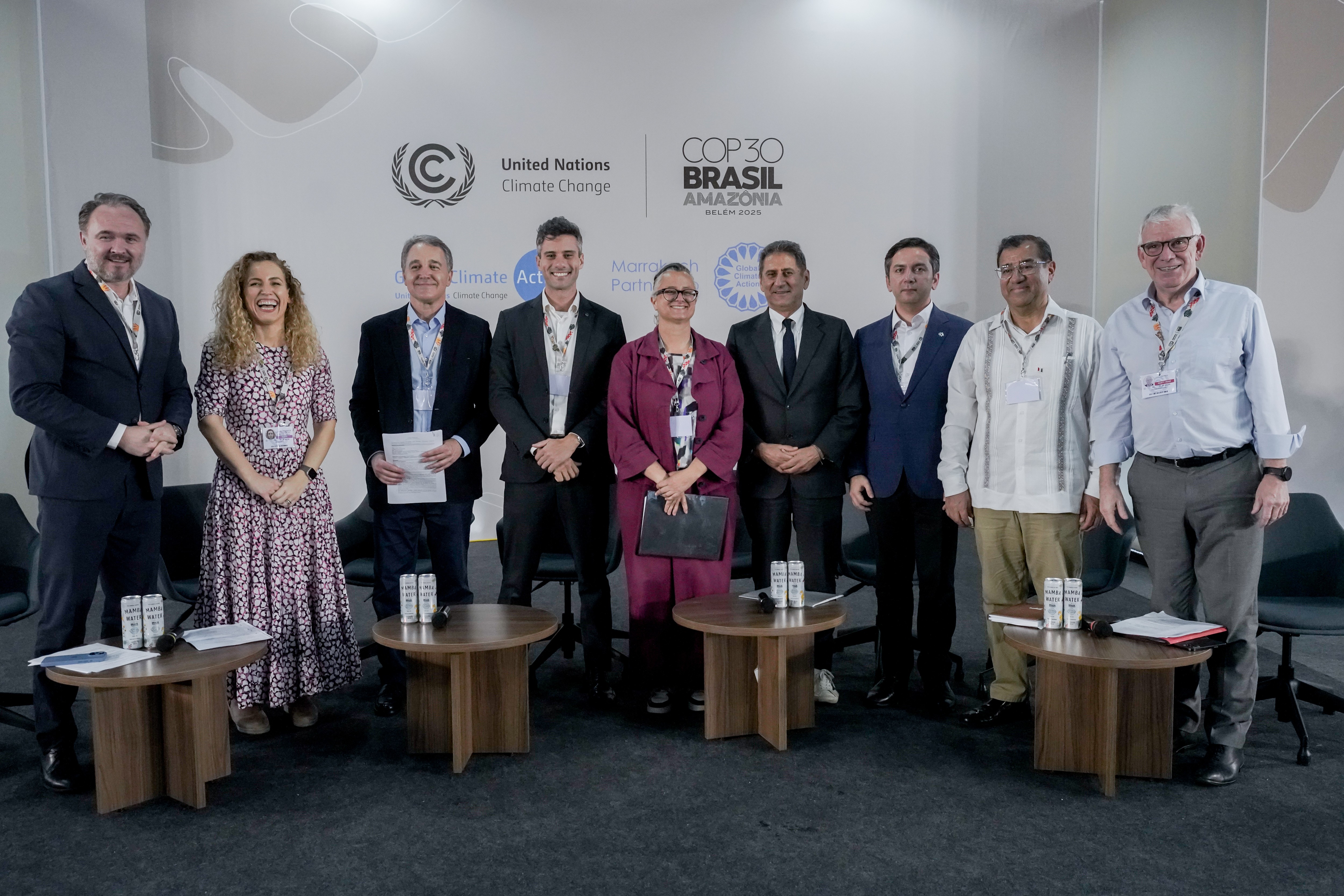Power Sector Companies Raise Investment Target in Clean Energy Grids to USD 148 Billion per Year
At COP30, Germany, the United Kingdom, seven multilateral funds, and other institutions endorsed a commitment to strengthen investments in system modernization for the energy transition

By Laura Marques and Fabiana Otero / COP30
The Utilities for Net Zero Alliance (UNEZA) announced at COP30 on Friday, 14 November, the expansion of its annual investment target for renewable energy transmission and storage systems from USD 117 billion to USD 148 billion. The coalition of 73 members now foresees a project pipeline worth USD 1 trillion by 2030. The initiative brings together the world’s leading power utilities and electricity service companies to promote clean energy solutions.
During the event held in the Blue Zone, the governments of Germany and the United Kingdom, seven multilateral funds, and other institutions endorsed the report by the Green Grids Initiative, Climate Finance Principles for Grids. The document highlights that current climate finance rules exclude more than 60 percent of the world’s energy transmission and storage network projects. The analysis provides solutions for recognizing the catalytic role that grid investments can play in decarbonizing fossil fuel–dependent regions and transitioning economies.
Countries and institutions endorsing the document include the United Kingdom, Germany, GIZ (German Agency for International Cooperation), KfW (German Development Bank), African Development Bank, British International Investment, East African Development Bank, Inter-American Development Bank, Climate Bonds Initiative, Institutional Investors Group on Climate Change, Asian Investors Group on Climate Change, Global Renewables Alliance, GridWorks, and UNEZA.
Challenges and Opportunities
COP30 High-Level Climate Champion Dan Ioschpe emphasized that while renewable energy generation is advancing rapidly, the challenge now lies in ensuring grid efficiency, resilience, and distribution capacity. According to him, investments in these systems increased by only 9 percent in 2024, revealing a significant financing gap. “If we can align capital, capacity, and collaboration, we can accelerate this transition together—not as an obligation, but as the greatest economic opportunity of our generation,” he stated.
Like the Climate Champion, several speakers underscored that much of the world’s existing energy infrastructure remains aligned with last-century technologies and requires modernization to strengthen renewable energy integration.
“If we do not finance grids and flexibility, the speed and scale of the transition will be compromised,” warned Francesco La Camera, Director-General of the International Renewable Energy Agency (IRENA).
Bruna Cerqueira, General Coordinator of the Action Agenda in the COP30 Presidency, praised the initiatives announced and called for their implementation. “We appreciate the fact that many have supported these measures, but what we want is to continue this work over time. This cannot be just an event at COP. We need consistency.”
Gustavo Ataíde, Brazil’s National Secretary for Energy Transition and Planning, reported that the country is implementing one of the most ambitious transmission expansion cycles in its history. Among the planned initiatives is the installation of a 2,500-kilometer High-Voltage Direct Current line with a 3-gigawatt capacity and new international interconnections. “These initiatives demonstrate that building modern, resilient grids ready for renewable energy is possible when planning, institutions, and financing are aligned. The world must move from political momentum to concrete progress, particularly in expanding storage solutions and doubling grid investments by 2030,” he emphasized.
